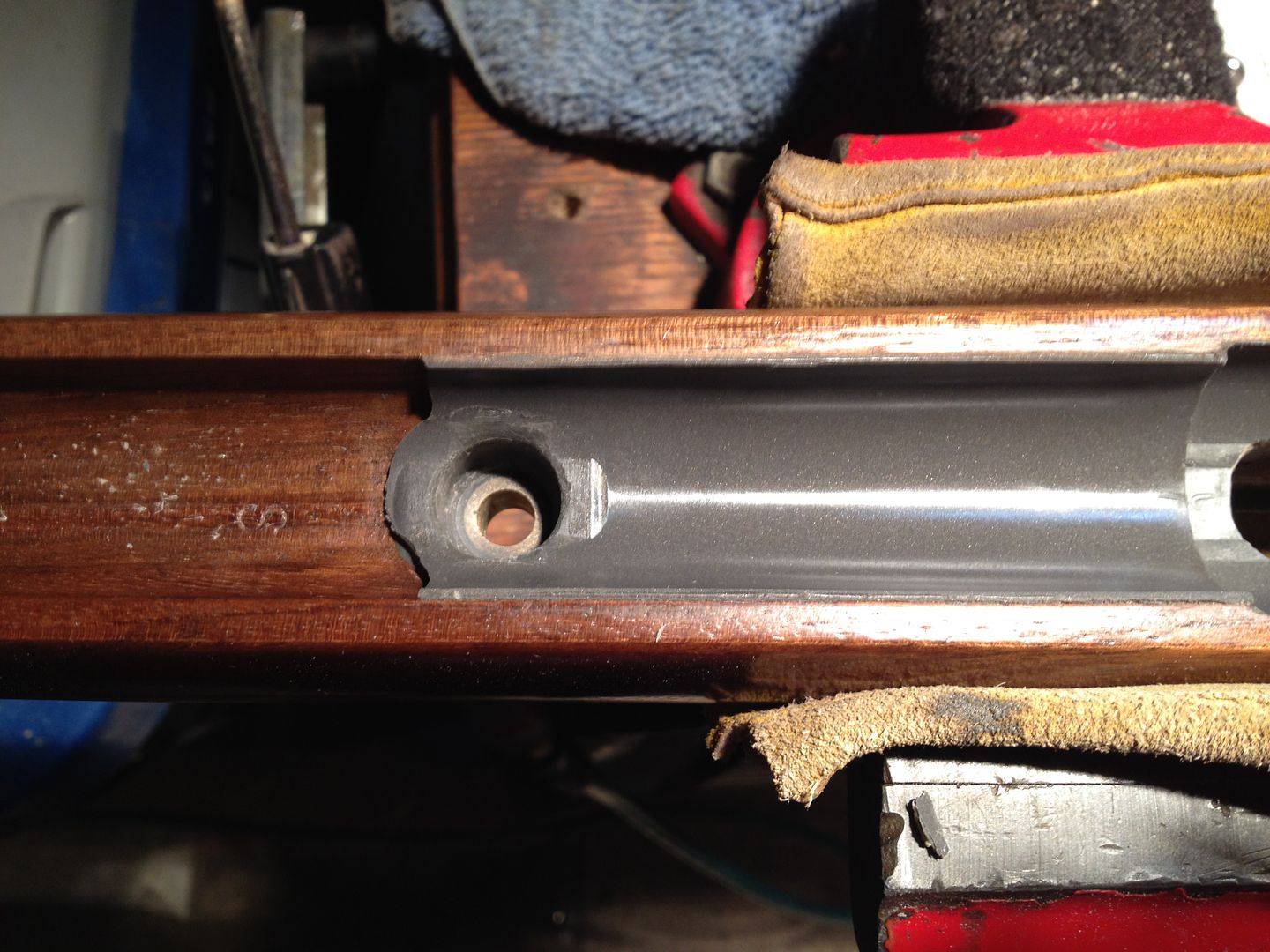Free Float vs Pressure Pad
If you have a free float, test shoot it first. Then skip down to the section describing testing with pressure pads.
And if you have contact between the barrel and stock, test shoot it first.
Then to create a free float for testing, put a thin washer or stack some aluminum tape under the front of the receiver surrounding the takedown screw area in order to elevate the front slightly and float the barrel. Then you can test it in that configuration without changing anything.
If it shoots better with the shim under the receiver, then sand out any contact areas in the barrel channel creating enough space for a free float. IMO, a dollar bill space is insufficient. I prefer one or two business cards, depending upon thickness but the rule of thumb I use is one business card for rimfire, two for centerfire. You are not creating space to tame horrendous barrel whip, but the amount that a stock can expand and contract with moisture and the amount of flex present when shooting off a bipod mounted to the front of the foreend can be enough to make a difference.
If it shoots better with contact between the barrel and stock, then the next stage of tuning will involve testing barrel contact with a pressure pad. I prefer slices of bicycle inner tube, of varying thicknesses. I make three, one of them 1 inch long, another 2 inches long, and another 3 inches long. Work with the one that is 2 inches long, and mark out your barrel channel in 1 inch increments. Start with the pressure pad right at the receiver, test shoot and then move it forward 1 inch, test shoot apply, lather, rinse, repeat. Once you find the "sweet spot", try the 1" and 3" pads at the same spot. Pick the best of the three, then work forward and back in 1/4" increments to fine tune. When that's done, you will have found what I nickname the rifle's G-spot. Then you just need to experiment with different size, thickness, and density of material before committing and gluing something in place. I prefer to use thin double sided adhesive tape to hold pressure pads in. Glue and epoxy can stiffen the pressure pad and change its properties.
It has been my experience that MOST, but not ALL .920/Bull barrels shoot better with a free float- which requires a rear tang or other hold down to achieve.
As a general rule, those bull barrels that do shoot better with a pressure pad usually perform best with the pressure pad very close, if not right against the takedown area/receiver. I have free floated many 20-21" .920 barrels weighing 3-4 lb mounted with a slip fit in all manner of receivers and have never seen the "weight of the barrel deform the receiver"...
I have seen droop induced by over tightening the V Block screws- one good remedy to prevent this is to use a Gunsmither Block which creates a straight pull.
It also helps to use a proper inch/lb torque wrench and torque them to 12-15 inch/lb MAX.
I have also seen droop in a rifle that had a sloppy fit between the barrel stub and counterbore in the receiver- the result of an out of spec stub in two cases and counterbore on a receiver twice. I have always been able to remedy that problem with Loctite 603.
My preference is the interference fit provided by the Kidd receivers. I use the heat/cold process and have never had a problem putting one together or taking one apart.
In my experience most Taper/Sporter profile barrel shoot best with a pressure pad, the distance from the receiver varies greatly but as a general rule of thumb, heavier taper and varmint barrels usually do best with the pressure pad about 4-6" from the receiver. Standard taper and pencil barrels also vary but in general, my experience has shown that they do best with the pressure pad farther away from the receiver, towards the end of the stock.
I do not claim this process to be "RIGHT", just what works for me.
There are exceptions to every rule.
DrGunner








